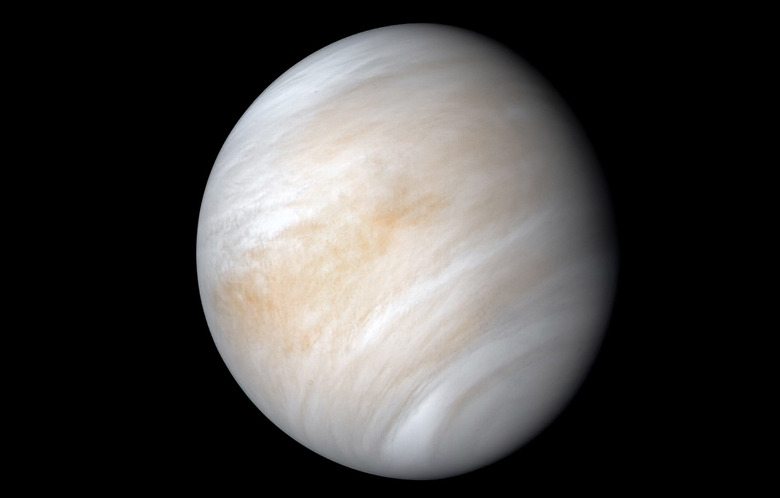Check Out The Only Photos Of Venus' Surface That Have Ever Been Taken
Despite decades spent exploring our solar system, there's still a lot that humanity hasn't accomplished, and still a lot that we haven't properly explored. Chief among those things that still need exploring are the other planets within our solar system. Sure, we have pictures of Mars, but what about photos of Venus' surface? How much have we explored that planet? The answer: not much at all.
While you can find dozens, if not hundreds, of images of Mars' surface, Earth's other neighbor, Venus, is limited to a series of images taken in the early 1980s. Further, those images weren't even taken by a NASA spacecraft, as NASA has yet to land a spacecraft on the planet's surface. Instead, the only photos of Venus' surface we have to look at were captured by Soviet-era spacecraft over 40 years ago.
Venus is the second planet from the Sun, residing right between Earth and Mercury. It's located nearly 125 million miles from Earth, just 12 million miles further than Mars, a planet that we have explored considerably in the search for life beyond our planet. As Earth's twin, learning more about Venus has been a want for astronomers for decades – so why are the only photos of Venus' surface so old?
It's because it has been so challenging to get spacecraft there. Venus is extremely hostile, and so far, NASA has only completed a single flyby of Venus with one spacecraft, the Mariner 2, in 1962. The spacecraft completed a 42-minute scan of Earth's twin, but that wasn't until 1970, when the Soviet Venera 7 touched down on the planet. In 1975, the Venera 9 touched down, capturing some of the best photos of Venus' surface.
The Venera 10, Venera 13, and Venera 14 would continue to capture photos of the surface throughout the early 1980s. But for every spacecraft that succeeded, others failed, and when the Soviet Venera 3 impacted Venus in 1965, it was the first to succeed after eight failed missions. It's the surface that makes this planet so hostile, with the photos of Venus' surface showing a cracked, dusty landscape.
This landscape is dominated by extreme heat and crushing atmospheric pressure. On Venus, temperatures range from 820 to 900 degrees Fahrenheit (437 to 482 Celsius), making it much more difficult to explore than the significantly colder surface of Mars, which averages -81 degrees Fahrenheit (-63 Celsius).
Of course, this could all change in the next few years, when NASA begins its newest set of missions to Venus, starting with the DAVINCHI spacecraft, which will study atmospheric descent on the planet. With other missions set to follow that one, perhaps NASA will soon have some new photos of Venus' surface to show off. For the time being, though, these will have to do.
